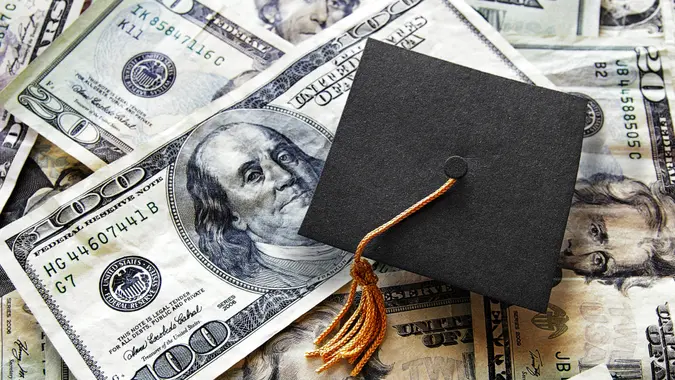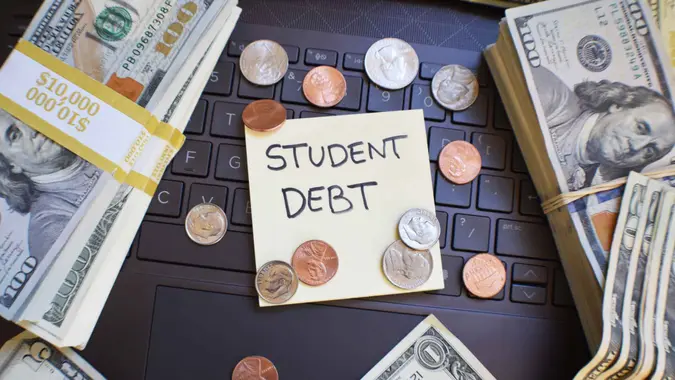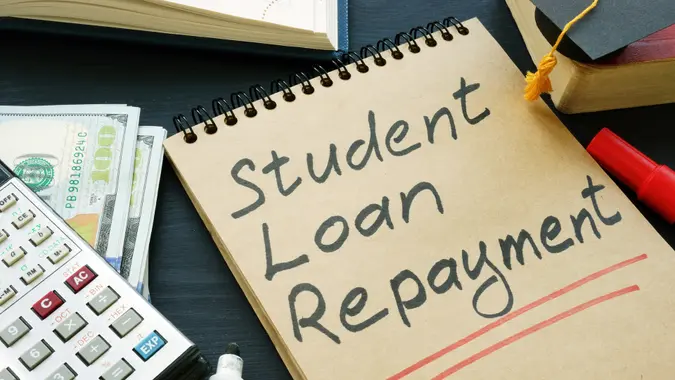Student Loan Forgiveness: How Much Would It Really Cost the Federal Government?

Commitment to Our Readers
GOBankingRates' editorial team is committed to bringing you unbiased reviews and information. We use data-driven methodologies to evaluate financial products and services - our reviews and ratings are not influenced by advertisers. You can read more about our editorial guidelines and our products and services review methodology.

20 Years
Helping You Live Richer

Reviewed
by Experts

Trusted by
Millions of Readers
One of the main objections to forgiving federal student loans is that the U.S. government will be on the hook for more than $1 trillion in unpaid debt if borrowers no longer have to pay it. But some argue that the actual cost would be well below that — or even that the federal government could actually come out ahead.
The latter argument is based on the idea that the federal government could save billions of dollars in administrative costs if it no longer has to process federal student loans currently on the books.
Estimates from the Congressional Budget Office (CBO) show that the administrative costs of the Federal Student Aid office in 2021 was a little more than $3 billion, according to the KQ Education Group website. Others put the estimate much higher when you factor in total costs, including hiring collectors to track down delinquent borrowers.
But even the highest cost estimates pale in comparison to how much the federal government is owed in student loans, with estimates there ranging from $1.5 trillion to $1.8 trillion. Wiping out those loans through debt forgiveness would be an expensive proposition.
“This cost of losses on the student loan portfolio held by the federal government would by definition rise a lot with full forgiveness,” Josh Bivens, director of research at the Economic Policy Institute, said in an email to KQ Education Group.
A lot depends on how a student loan forgiveness package might look. A proposal from Sen. Bernie Sanders (I-Vermont) to cancel all student debt would cost roughly $1.6 trillion, according to a February estimate from the Brookings Institution.
A more modest plan from Sens. Elizabeth Warren (D-Massachusetts) and Chuck Schumer (D-New York) to forgive student debt up to $50,000 per borrower would cost an estimated $1 trillion, the Brookings Institute found. President Joe Biden proposed forgiving debt up to $10,000 per person when he was campaigning for office. Under this plan, the cost would be around $373 billion.
Even if you factor in saving money on costs associated with collecting unpaid student debt, experts say loan forgiveness would still cost the federal government a lot more money than it would save.
“It is true that the government pays servicers to collect the loan payments, but in normal times they remit significantly more back to the government than they are paid,” Constantine Yannelis, an assistant professor of finance at the University of Chicago, told KQ Education Group in an email. “The argument that this saves money is kind of like saying one would save money if their car is stolen, because the person would no longer need to pay for gas.”
More From GOBankingRates
 Written by
Written by  Edited by
Edited by 























